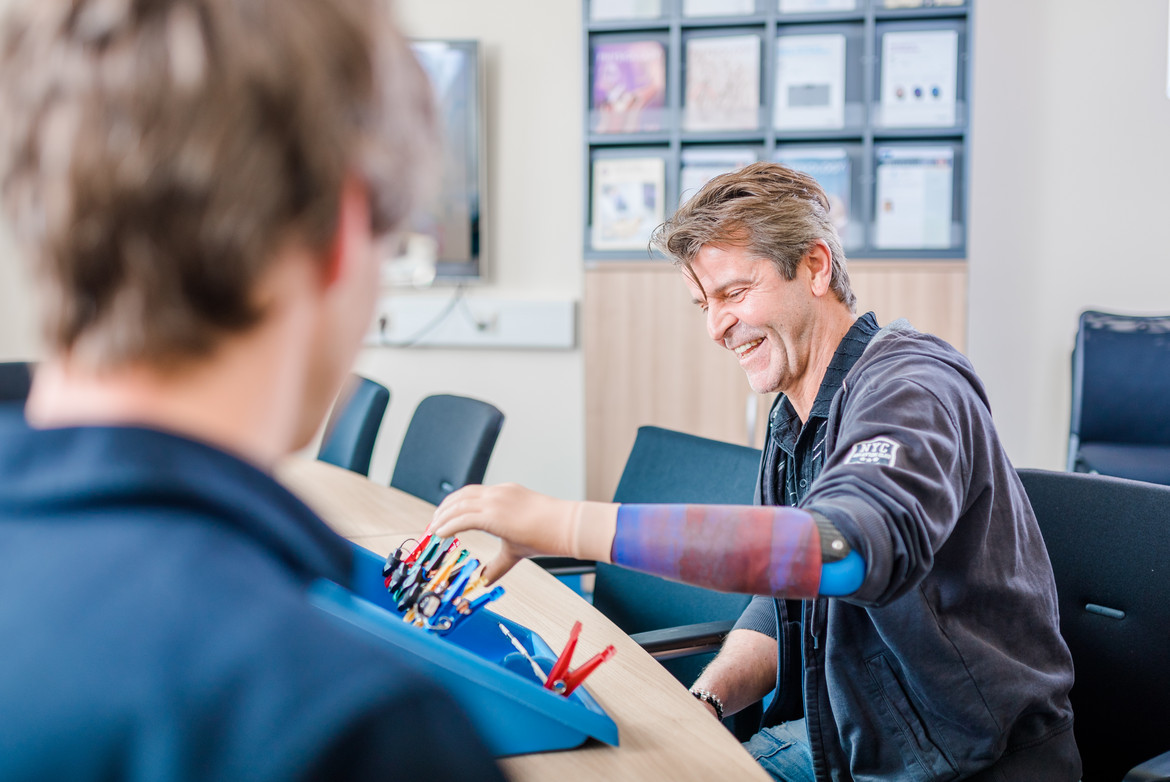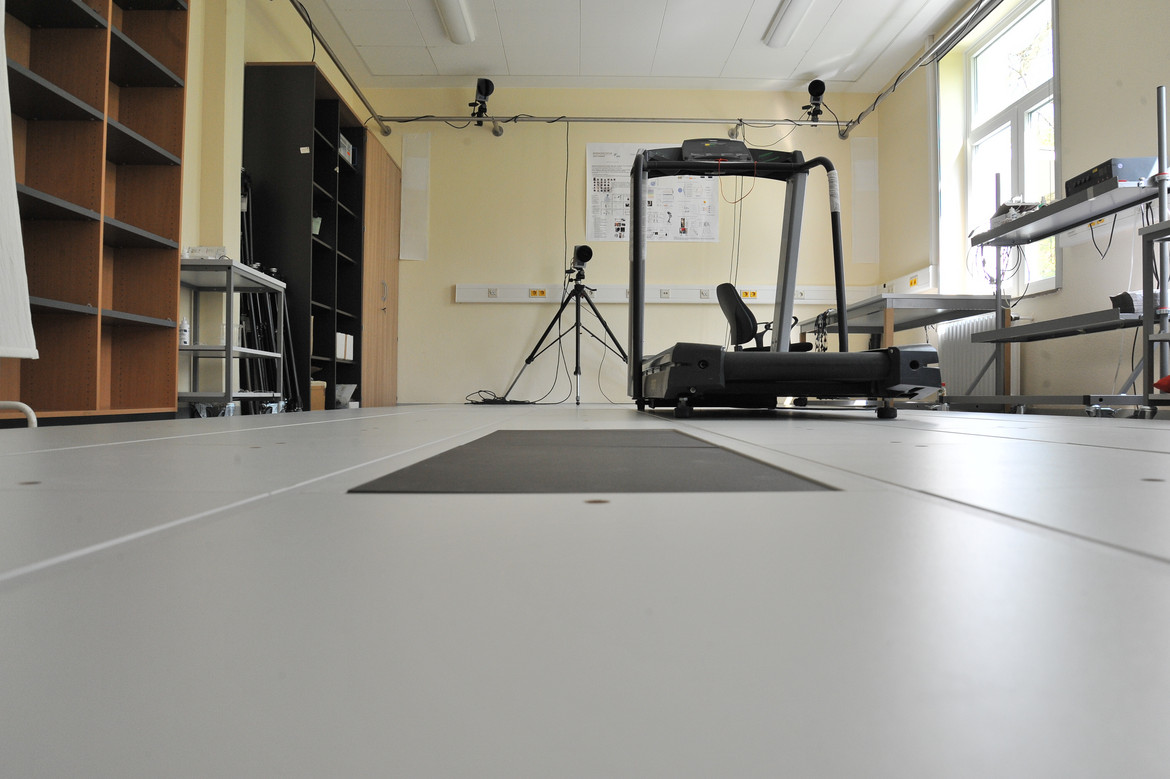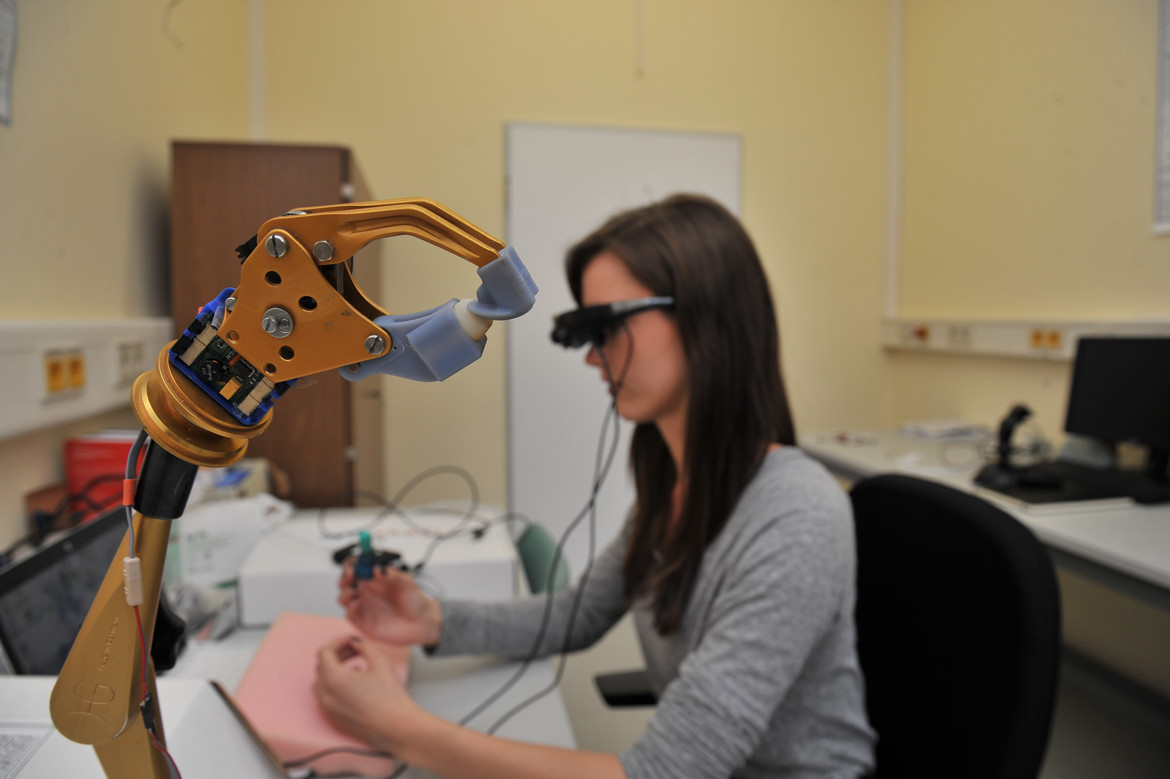Applied Rehabilitation Technology
Klinik für Unfallchirurgie, Orthopädie und Plastische Chirurgie
We investigate basic neuromuscular mechanisms mediating movements and their changes underlying both acute adjustments (e.g. muscle fatigue) and chronic adaptations (e.g. training, stroke) (movement neurophysiology). Moreover, we develop methods to restore, replace, and modulate lost or impaired motor functions (neurotechnologies). Our approach is interdisciplinary and is based on expertise in computer modeling (bioelectricity, biomechanics, neural networks), neural signal processing (machine learning), electrode and sensor design (high-density intramuscular and surface EMG electrodes), hardware design (multi-channel general-purpose amplifiers), neurophysiology of human movement (spinal circuitries, motor units and motor neurons, motor control modularity) and neurotechnologies (FES, BCI, robotics, active prostheses).
Restoration of motor functions
Intuitive, functional restoration of motor functions requires development of advanced control interfaces. We develop machine learning and sensor fusion algorithms, which decode data from variety of sensory inputs (e.g., elecotromyography, computer vision, inertial sensors) in order to achive robust prosthesis control.
Restoration of sensory functions
Feedback is crucial for restoration of sensory functions following neurological impariment. We develop non-invasive (electrotactile, vibrotactile) haptic interfaces for improved prosthesis function and restoration of body image.
Understanding of human motion
Improving treatments of a musculoskeletal disease or injury requires accurate understanding of how various pathologies affect movement. To this end, we use different modalities (e.g., motion capture, electromyography, and virtual reality) to examine various clinical populations under challenging conditions that are commonly encountered in daily life.
Sensory-motor integration
Sensory-motor integration (SMI) is a fundamental principle of human motor control. We utilize augmented and virtual reality in combination with variety of feedback and control interfaces to understand complex SMI processes such as learning or embodiment.



